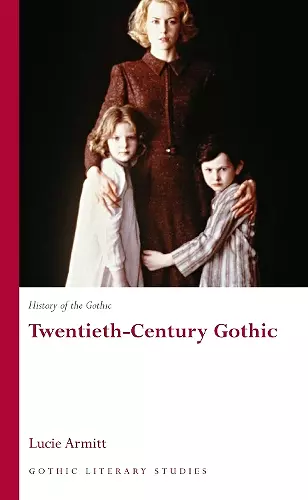History of the Gothic: Twentieth-Century Gothic
Format:Paperback
Publisher:University of Wales Press
Published:1st Sep '09
Currently unavailable, and unfortunately no date known when it will be back

Why, at a time when the majority of us no longer believe in ghosts, demons or the occult, does Gothic continue to have such a strong grasp upon literature, cinema and popular culture? This book answers the question by exploring some of the ways in which we have applied Gothic tropes to our everyday fears. The book opens with The Turn of the Screw, a text dealing in the dangers adults pose to children whilst simultaneously questioning the assumed innocence of all children. Staying with the domestic arena, it explores the various manifestations undertaken by the haunted house during the twentieth century, from the bombed-out spaces of the blitz ('The Demon Lover' and The Night Watch) to the designer bathrooms of wealthy American suburbia (What Lies Beneath). The monsters that emerge through the uncanny surfaces of the Gothic can also be terror monsters, and after a discussion of terrorism and atrocity in relation to burial alive, the book examines the relationship between the human and the inhuman through the role of the beast monster as manifestation of the evil that resides in our midst (The Hound of the Baskervilles and The Birds). It is with the dangers of the body that the Gothic has been most closely associated and, during the later twentieth century, paranoia attaches itself to skeletal forms and ghosts in the wake of the HIV/AIDS crisis. Sexuality and/as disease is one of the themes of Patrick McGrath's work (Dr Haggard's Disease and 'The Angel') and the issue of skeletons in the closet is also explored through Henry James's 'The Jolly Corner'. However, sexuality is also one of the most liberating aspects of Gothic narratives. After a brief discussion of camp humour in British television drama series Jekyll, the book concludes with a discussion of the apparitional lesbian through the work of Sarah Waters.
"The great strength of this excellent book is that it is not a straightforward tour through the canonical works of the twentieth-century Gothic. It is much more interesting than that. Armitt takes the reader on a devious, elliptical, fascinating journey through a range of strange texts, some well-known and others unjustifiably less so, combining critical inventiveness and precision with a constant undertow of reference to major cultural and social preoccupations--child abuse, trauma, aftermaths of war, sexual uncertainty and transgression--which both illumine the texts and are in turn illumined, through a specifically distorted Gothic lens, by them."--David Punter, University of Bristol
ISBN: 9780708320433
Dimensions: unknown
Weight: 295g
193 pages